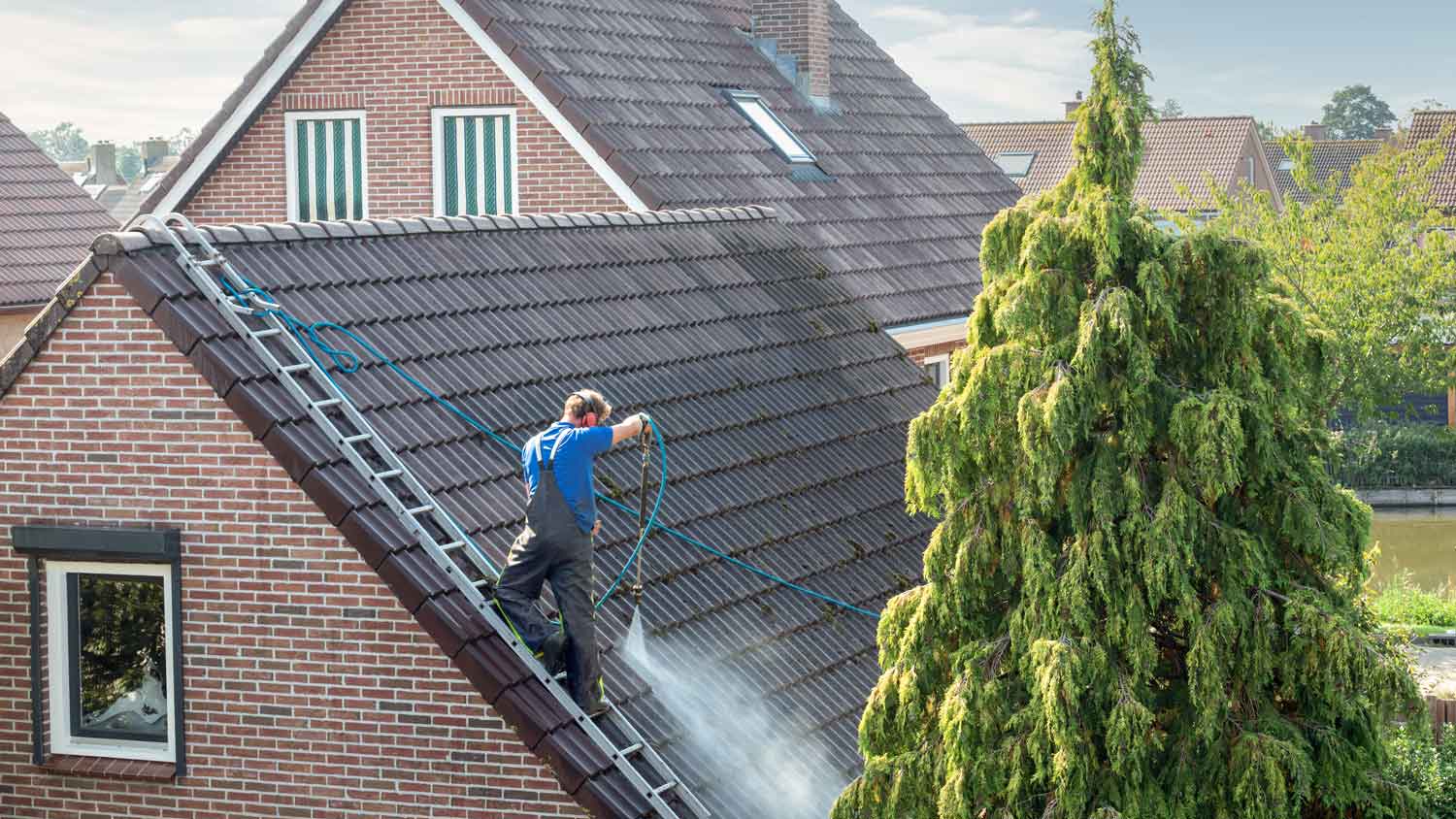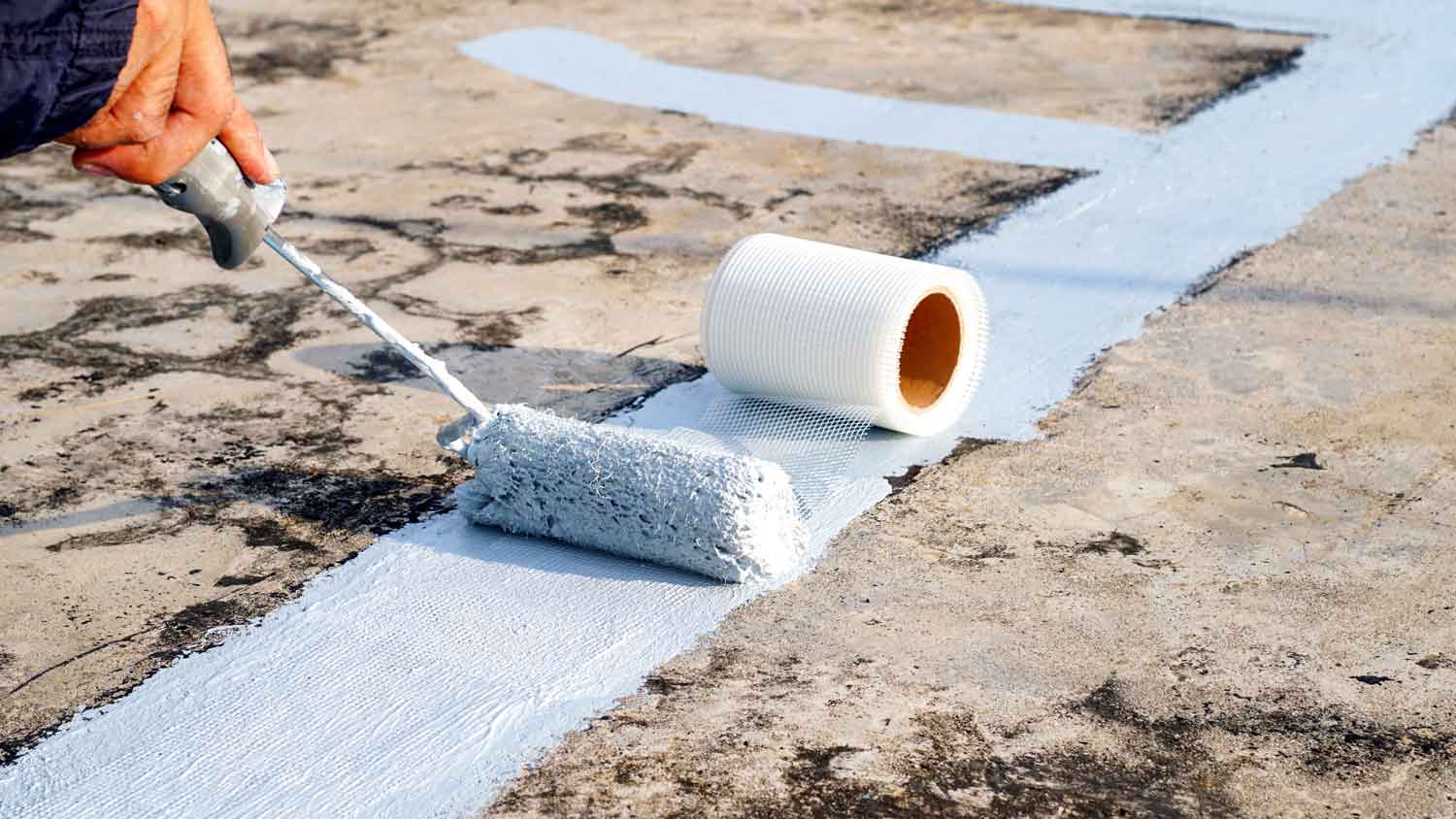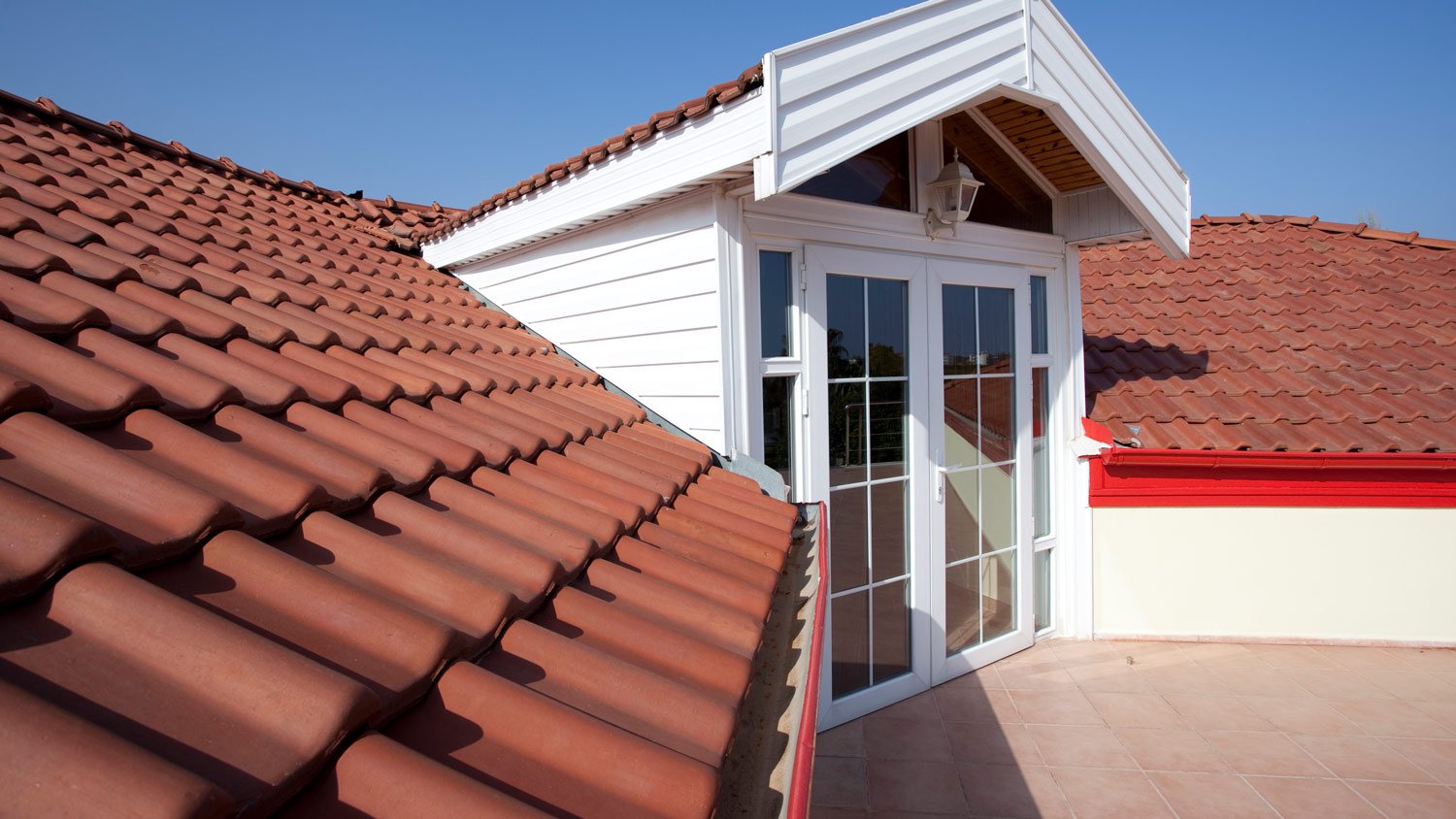
Thatched roofs add tons of old-world charm to your home and provide outstanding insulation. Learn about thatched roof costs and what affects your final price.
Give your roof an extra layer of protection


Sealing a roof can be a dangerous and time-consuming DIY task since it requires you to get up on a ladder and perform extensive work at tall heights.
If you want to seal a roof on your own, you’ll need multiple helpers to stabilize the ladder and deliver materials and tools.
While hiring a pro to seal a roof costs between $35 and $90 per hour, they’ll know which sealant type to use for your needs and roofing material.
Repairing or replacing a roof can be a complex, time-consuming, and costly process, particularly if you are living in the home while work is being done. Applying a seal coat is a great way to extend the lifespan of your roof, whether it is brand new or you want to squeeze a few more years out of it.
Seal coats are an absolute must for flat roofs to prevent water from building up and leading to moisture damage later on. Applying a dedicated sealant is also important for sloped roofs, as the coating shields the surface from UV damage and improves your home’s energy efficiency. Better yet, this is a DIY-friendly job, though it is not without its hurdles. Read on for step-by-step guidance on how to seal a roof on your own.
Sealing your roof means that you install a coat of sealant. This sealant helps increase the lifespan and durability of your roof against harsh weather and UV rays. Sealants can also increase the waterproofing, fire resistance, and mold resistance of your roof.
These are the most common roof sealant types available on the market:
Polyurethane
Silicone
Acrylic
Liquid rubber
Sealant tape
These products are either water-based or solvent-based. Water-based sealants are thinner and more budget-friendly, although they require more frequent reapplication. Solvent-based sealants cost more but are best for protecting your roof against severe weather.
Additionally, here are the sealant types to consider for different goals:
Increased waterproofing: rubber, silicone, polyurethane
Increased UV ray resistance: rubber, silicone, polyurethane, acrylic
Easier to install: water-based rubber, acrylic
For rainy and snowy areas: polyurethane
Small repairs: sealant tape
Roof coating costs $0.65 to $5 per square foot, depending on the type of sealant you choose.
Most homeowners are looking into sealing their roofs to repair leaks, prevent water damage, and maintain their roofs. Hiring a pro helps avoid further damage to the roof and home and ensures the project is completed correctly.
First of all, this process is conducted primarily on the roof, which is not the safest place to be, especially if you are inexperienced working at heights. If you decide to seal a roof yourself, be sure to wear protective gear, use a sturdy ladder, and have a friend or family member on hand to help. Also, gather up all of your supplies and tools so you do not have to go reaching for anything later on. And make sure to purchase the right sealant type for your roof.
The last preparatory step is to climb the ladder and check out the state of your preexisting seal coat. Clear away any flaking or loose sealant with a stiff brush and brush off any rust if you are working on a metal roof. You should also remove any chunks of debris or anything else out of the ordinary, like old bird’s nests and the like.
After you finish the preparatory work, move on to these six steps to seal your roof properly.

You already removed debris, residual seal coat, and rust, but now it is time to give the roof a proper cleaning so the new sealant applies evenly. The best cleaning solution for the job is an etching cleaner such as trisodium phosphate, otherwise called TSP. Start by mixing around half a cup of TSP into two gallons of hot water. If you noticed some mildew on the roof during your initial inspection, add a quart of bleach to the solution and cut down the water by a quart.
Always wear protective eyewear when working with TSP. Once you are properly protected, apply the solution to the roof with a stiff brush or a sprayer of some kind. Allow the compound to sit for a while (check the TSP’s instructions for specific time details) and finish it off with a thorough rinsing with water.
If you notice any leaks, holes, or other types of damage to the roof or specific parts of the roof, like the flashing, now is the time to make the necessary repairs. Give the roof another inspection now that it is clean to look for any damage that eluded you earlier. Grab your caulking gun and caulk seams throughout the roof. Patch up any holes or leaks with a simple roof patching kit. These kits differ in many regards, but the process typically involves applying a layer of the patching compound, adding a layer of a reinforcing grid mesh, and finishing with another layer of patch. Reinforcing grid mesh ships with roof patch kits and is a flexible mesh coating that bonds with the patch.

This step is potentially optional, as some sealant compounds already feature a primer as one of the primary ingredients. In other words, read the instructions that accompany your sealant. If it says to add primer ahead of time, use a roller or soft roof brush to apply a layer of primer to the entire roof surface. Allow it to dry before moving on to the next step.
Before you actually apply a coat of sealant, check the instructions and find out if there are any temperature or weather restrictions, as some compounds require specific temperature ranges and humidity levels to bind properly to the roof materials. If the weather does not comply with the sealant’s demands, put these final steps of the project on hold until the perfect day presents itself. Some sealants are not picky regarding outdoor conditions. If this is the case, move on to the application process.
Now it is time to apply the roof sealant. Start by pouring a small amount of the seal coat onto the roof and using a soft roof brush to spread it into a thin and even coat. Work slowly and carefully in small sections until you have covered the whole surface of the roof with a coat of sealant.
Some people stop here, but many roofs benefit from a second coat, though only you know the specific needs of your roof. Wait four to six hours for the first coat to dry before starting on the second. When applying the second and final coat, make brush strokes that are perpendicular to the strokes you made when applying the first coat. This helps create strong and stable layers.
Allow the sealant to dry for at least six hours, though overnight is the best choice here. Once fully dried, climb the ladder for the last time to inspect your work, carrying the sealant with you. Inspect the dried coat thoroughly, looking for any areas you accidentally missed during the initial application. Touch up these spots with the sealant until you are satisfied with the results. Allow these spots to dry and, voilà, you have a newly sealed roof.
To seal your roof properly, you should first make sure you are using the right sealant type for your goals and type of roofing material. Roofing products usually specify which materials they work best on, so check the details before purchasing.
Make sure to take your time during the cleaning process, because any leftover dirt, moss, or other debris will prevent you from installing the sealant evenly on your roof.
And before you start working with the sealant, take time to cover any important landscaping or outdoor furniture around your home. That way, you will not have to worry about accidentally spilling sealant and causing damage.
This is a time-consuming and potentially dangerous job, as the lion’s share of work is conducted at great heights on top of your roof. The potential danger involved in this process is why many homeowners contact a local roof sealing company, as these contractors are experienced and insured for the work. However, the work itself is not terribly difficult and is appropriate for DIYers with experience in laying down paint, primer, and related materials. Additionally, a good chunk of the time commitment involves waiting for coats to dry.
If you are dead set on doing it yourself, make sure to have helpers available to stabilize the ladder and deliver important materials and tools while you are on the roof. You could save up to $1,000 by doing it yourself, as most contractors charge between $35 and $90 per hour for this type of work.
From average costs to expert advice, get all the answers you need to get your job done.

Thatched roofs add tons of old-world charm to your home and provide outstanding insulation. Learn about thatched roof costs and what affects your final price.

Metal shake roofs offer a long-lasting alternative to asphalt shingles. Learn what metal shake roofs cost and what factors affect how much you’ll pay.

The cost to install vinyl soffit on your home depends on several factors, including the soffit length, condition, and the working height.

If you’re upgrading your roof with stone-coated steel, you should be aware of the total project cost. Learn what will impact your final stone-coated steel roofing costs.

Not sure if you need a new roof yet? Check out these warning signs that you need a new roof to catch roof problems early.

Dreaming of a tile roof but not in love with how expensive clay tiles are? Concrete tile roof costs are much lower, but you still get that classic look.